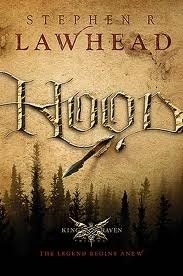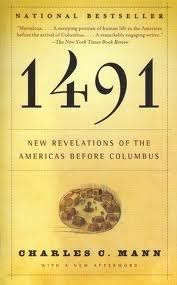Alex C. Telander's Blog, page 81
April 25, 2012
“Hood” by Stephen R. Lawhead (Thomas Nelson, 2006)
There are a couple of “legends” in British history that many people worldwide know about: one of them is King Arthur and the other is Robin Hood. Arthur has an entire bookshelf of history and fiction written about him, and many of those fiction books profess to be as accurate as the possible truth, even though it is still not fully known if there ever was such a living person. As for Robin Hood, much of the same story and lore shrouds this figure, and yet the amount written about him is small in comparison. There are many seminal works that are considered part of the “King Arthur Cannon,” such as Malory’s Morte D’Arthur, Chretien de Troyes romances, Marion Zimmer Bradley’s Mists of Avalon, Bernard Cornwell’s Warlord Chronicles, and Jack Whyte’s Camulod Chronicles, to name a few. In fact the author, Stephen R. Lawhead, has even written a series about Merlin and Arthur, known as his Pendragon Cycle. There have been mediocre to poor TV shows about he who robs from the rich to feed the poor, but there has never really been an equivalent book series or trilogy about Robin Hood of a high caliber; until now.
Bran ap Brychan doesn’t really know if he ever wants to be king, but his father is a poor monarch who doesn’t treat his subjects of Elfael as well as he should perhaps, but then Bran doesn’t really know what he wants to be. Then all that changes when a group of Normans invade the Welsh kingdom and his father is killed, making Bran the automatic heir. Except the Normans seize the kingdom, awarding it to a bishop and care little for Bran and his supposed claim to this throne. And so begins Bran’s adventure, as he brings together a band of merry men to go see King William and wrest back his kingdom. Thwarted in London, he is told he can have his kingdom back for a ridiculously high amount of money. So Bran sets about getting the money the only way he knows how: from those cursed Normans who stole his land, as well as making sure his people are treated right and well.
Stephen Lawhead presents the first of his impressive trilogy on Robin Hood in Hood, explaining his detailed research in the afterword, and pointing out the unlikelihood of this character living in the thirteenth century in Sherwood Forest and going against King John. Lawhead posits Robin Hood living in the late eleventh century in the time of William the Conqueror and his overtaking of Britain with his Normans. Bran is a Welshman, and the Normans cared little for this distant part of Britain, except when they wanted to make it their own. It makes perfect sense that a man out of legend would rise up to help the people against those dastardly Normans. Lawhead also pulls from Celtic mythology to seamlessly blend with the story. Hood is a great and riveting work of historical fiction that will have any fan of the genre hooked and wanting to read more in the trilogy.
Originally written on March 12, 2012 ©Alex C. Telander.
To purchase a copy of Hood from Amazon, and help support BookBanter, click HERE.








April 24, 2012
BOOK REPORT: Book News for the Week of April 22nd on Forces of Geek

Friday Night Lights Sequel
It’s been twenty-two years, but if you ask most people, they are familiar with the title Friday Night Lights, whether referring to the bestselling book by Buzz Bissinger or the popular TV show and movie of the same name. Bissinger has now published an official sequel, titled After Friday Night Lights, in ebook format only.
No Pulitzer Prize for Fiction in 2012
It’s now official there is no Pulitzer Prize for Fiction this year, as while the fiction jurors selected three titles, the 18-member board could not unanimously decide on a winner. There has naturally been quite a bit of backlash over this from a number of sources.
Amazon Has Bond
In another new surprise from the shopping giant, Amazon.com, they have acquired a ten-year publishing rights contract for all the Ian Fleming James Bond novels, both digital and print.
Who Buys the Most E-Readers
In a fascinating and surprising article from the Atlantic, it is revealed which cities buy the most e-readers in the country, with Lexington, Kentucky shockingly coming out on top.
[CONTINUE READING . . .]








April 23, 2012
“1491: New Revelations of the Americas Before Columbus” by Charles C. Mann (Knopf, 2005)
If I were to ask you what you know on the subject of the people that lived in the Americas before the arrival of Columbus and how they got there, you’d likely tell me they came over from Asia during the last ice age and proceeded to populate North, Central and South America in their small numbers and lived a nominal existence, traveling in tribes, forming their small civilizations, such as the Incas, Aztecs and Mayans, which eventually disappeared and then their lives were changed for the better when Columbus arrived in 1492, and brought the western world of civilization to the Americas. Charles C. Mann noted essentially this when he read his son’s history books and saw that the supposed accurate history hadn’t changed since he’d been in high school, which didn’t seem right. And so began years of research and learning that has gone on to change the way the western world sees the history of the Americas pre-Columbus. While the book was revolutionary when it was released, went on to win awards and make a lot of “best of” lists, there is still a lot of educating of the world to be done with this true history; hopefully this book will help that cause.
In 1491 Mann seeks to reveal the last thirty years of archaeological and anthropological research and discoveries with the hope that it will change and alter all the commonly held assumptions mentioned above. He does this in a well thought out way, revealing all the evidence and theory on particular subjects, like the whole population of people in the Americas, as well as the sizes and extents of the various empires that formed, and then proving what is the correct one and why, such as the astonishing fact that in 1491 there were likely more people living in the Americas than in Europe! He goes into detail on the Aztec and Mayan civilizations, revealing their true extensiveness and reach and the affect they had on the people, their development and knowledge, and simple things, like why they had invented the wheel but didn’t use it as a means of transportation, because the rocky or jungle terrain made traveling by wheel wouldn’t be inefficient. As to the supposed fact that the peopling of the Americas took place around twelve or thirteen thousand years ago with the Bering Strait land bridge, the evidence says otherwise, with some pointing to the mere existence of the peoples in the Americas before this period, as well as the crucial cutoff date with the end of the ice age not correctly coinciding with the people reaching South America according to the timeline; basically the evidence simply proves otherwise.
By the end of the book, the reader has come to the incredible realization that most of what they learned in school about the Americas is completely wrong, and that this supposedly undiscovered continent went on to do amazing things for the rest of the world, such as providing it with three-fifths of the world’s grown goods, including corn (or maize), peppers, potatoes, tomatoes and squash. In fact the term “new world” may have been somewhat of a misnomer, as it seems possible the settling of the Americas may have happened before western civilization.
Much as Guns, Germs and Steel was revolutionary in changing our outlook on the way the world is, 1491 has the same affect on how the world views the Americas, what its true history was, the immense effect it had on the world after Columbus, and how the idea that these people were simple and primitive is just ridiculous. The book is by no means an easy read, but once the reader makes it through, the fulfillment is well worthwhile and enlightening to say the least.
Originally written on March 17, 2012 ©Alex C. Telander.
To purchase a copy of 1491 from Amazon, and help support BookBanter, click HERE.








April 22, 2012
“In That Quiet Earth” by Alex C. Telander

Much like his first collection, , Alex C. Telander’s new short story collection, “In That Quiet Earth,” runs the gamut of genres, showing his extensive breadth and range as writer. Readers will not be disappointed and will find a number compelling storylines and complex characters to become engaged in reading about.
The collection kicks off with a short piece exploring a man who is changing in a way he doesn’t want to. “The Lonesome Road” is one of the first stories Telander wrote, and goes into depth about the security we feel in everyday life, and what happens when that is suddenly taken away. Some other interesting stories include “Outside the Chamber,” exploring the role of Nazis charged with gassing victims, to a classic fantasy tale in “The Adventure of Lem, Odo and Tom,” and ending with “Motion in Motion,” a unique stream of consciousness story unlike any other. The collection also features two sneak peeks at two of Telander’s future novels.
The collection is a broad and fascinating one, providing something for everyone, leaving readers at the end wanting more and waiting for Alex C. Telander’s next work.
To download the ebook in any format, click HERE or the cover above.








April 20, 2012
Coming April 22: “In That Quiet Earth”

I’m going to be totally honest with you. I got my dates mixed up and thought April 22nd was a Tuesday, which was when I was planning to release my next book, and it’s actually this coming Sunday. But that’s okay, I’ve got the manuscript all ready, and as promised, the book, In That Quiet Earth, featuring ten short stories by yours truly, will be up and available in ebook to download for free come Sunday morning.








04/19 On the Bookshelf: “Princess of Mars,” “Kill Decision,” “After the Fall, Before the Fall” & “The Weird”
I know it’s been a while since I did an “on the bookshelf,” but that’s mainly because I haven’t been getting much in of late, but I figured it was time to mention some of the recent titles that have arrived and that I’m really excited about.
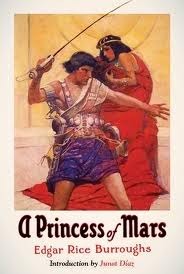
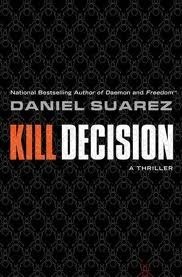
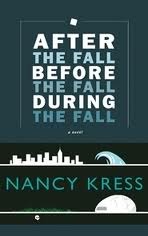
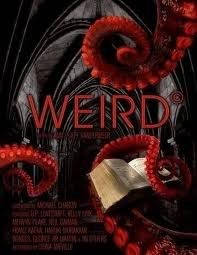
So we start off with a beautiful new hardcover edition of Princess of Mars by Edgar Rice Burroughs, from the Library of America. Having never read it, and after loving the movie, I’m looking forward to this one. Also have a new one from Daniel Suarez, author of the awesome and bestselling Daemon and Freedom. Kill Decision comes out July 19th. And then a new scifi book from Nancy Kress, After the Fall, Before the Fall, which is a combination eco-thriller and time-traveling book; what’s not to like? And finally we have The Weird, an amazing, massive anthology from the greats, Ann and Jeff VanderMeer, collecting a ton of stories that are simply just weird, from the beginning of the 1900s on up to the present.








April 19, 2012
BOOKBANTER COLUMN: The Art of the Book Review Part I – How I Write a Book Review
I’ve been writing book reviews now for over ten years; 2014 will actually be my fifteenth year of writing reviews. I started in college, working for the student-run newspaper, and while my life has changed in many ways since 1999, and I’ve moved to a number of different places, two things have remained constant: I am continuously reading one or more books at a time, and when I’m done reading a book I will usually review it, no matter when it was released.
My website, BookBanter, now has over 600 book reviews, and as of April 13th, I posed my 650th review. I have had a number of my reviews quoted in books, and one even quoted on the cover – Amber Benson’s Cat’s Claw. So I like to think I know a thing or two about writing book reviews.
I’m sure if you scour the internet you’ll find a number of sites and documents and perhaps even treatises proclaiming how to write the ideal or perfect book review, and how there is a set form and format to it that cannot be diverged from, if one is seeking to create said “perfect book review.”








April 18, 2012
BOOK NEWS: Book Report for Week of April 15th on Forces of Geek

New J. K. Rowling Book
If you missed it, here’s the latest into on Rowling’s new book, A Casual Vacancy, which is a story set in an idyllic English town called of Pagford, where the death of one of its most cherished citizens leads to the darkly comic revelation of its secrets. The book is due out September 27th.
Chris Weitz is Doing a Book
From the writer, director and producer, known for such movies as About a Boy and New Moon, is turning to the written word and the published page. The book, The Young World, is a post-apocalyptic young adult novel due out Spring 2014.
Robert Kirkman is Doing Another Book
Robert Kirkman, bestselling graphic novel writer of The Walking Dead, had a taste of writing a book with The Walking Dead: Rise of the Governor, and has announced he and co-author Jay Bonansinga will be publishing another book due out October 16th, called The Walking Dead: The Road to Woodbury.
Ten Bestselling Fiction Authors of All Time
From The Passive Voice comes a pretty fascinating list of the top ten bestselling authors of all time, some authors which you’ll be able to guess and some you’ll never expect.
[CONTINUE READING . . .]








April 17, 2012
GUEST POST With Merry Jones: On Writing a Series: Keeping Characters Fresh

It’s tough to write a character who springs to life, leaps off the page and lands in the hearts and minds of readers.
It’s even tougher to write a character who sustains her (or his, but I’ll use the feminine pronoun here to avoid the his/her awkwardness) energy and readers’ interest throughout a sequence of books.
That’s been my challenge in two mystery/thriller series, so far. And here is some of what I’ve learned:
1. Characters can evolve, change and grow over time.
Some of the greats like Agatha Christie and Conan Doyle didn’t seem to bother with this: Sherlock Holmes never really ages or changes, nor does Hercule Poirot. And Miss Marple? Well, she’s as steady as a battleship. These characters stay the same, getting plucked from one mystery and dropped into another, moving from location to location, crime to crime, basically immune to time and the effects of their experiences.
By contrast, I find it difficult to keep my characters locked in to a single phase. Like other people, they learn as they go, and their learning alters them. They become open to/closed off from new relationships. One becomes traumatized and develops PTSD. Some marry or divorce, have families. They get older, and their priorities and perspectives change with time.
Even so, each book can stand alone, partly because each finds the main character—like an actual person–in a definite situation or stage of life. The reader of each book in the series is meeting the character anew, instead of seeing her as predictable and stagnant and just exactly as she was in preceding books.
2. In each book, characters can reveal new sides of themselves.
A series of books is, in many ways, like dating. The first book (or date) isn’t going to/can’t present everything there is to know about the protagonist (or date)–It’s mostly going to introduce her and put her in a predicament (or relationship).
But each book (and date—you can continue the analogy on your own) allows her to display part of her backstory, presenting additional aspects of her life. Her childhood. Her parents and/or siblings. Her prom date. Her most embarrassing moment. Her biggest accomplishment. Her personal paradoxes, contradictions and quirks.
Book two, for example, might explain how she developed her hobby of pigeon raising. Or her fear of high fashion. Her talent at the trombone. Her love of linguine. Her passion for pigeons. Her fascination with physics.
Whatever qualities you’ve given her, each consecutive book exposes readers to new segments of her life and personality. It twists the character into a new position, so readers see her from a new angle, getting to know her better. As the series progresses, the protagonist becomes fuller, more real. And, hopefully, her relationship with readers deepens.
3. At some point, the character will speak.
When you’re writing a series, you’re going to live with your protagonist for a long time. In fact, you may spend more time with her than with your three-dimensional, breathing, tangible companions. Much like a demanding child, she might begin to intrude into your other interactions, interrupting your activities at inconvenient and unpredictable times.
That may sound far-fetched, but, trust me, it’s true. Characters can nudge you awake in the middle of the night, start jabbering while you’re in the middle of a conversation, blather when you’re balancing your checkbook, burst in on an intimate moment with your spouse, distract you while you’re driving. They will try to take over your work, suggesting a new escape route for their current crisis. A new outcome to an argument. A new plot twist. A new villain. A new bit of dialog. A new romance.
This expression by the character is to be expected. But the point is that she is NOT the writer. And the writer must, like a parent, remain in control, not allowing the character to take over and, say, lead the plot off in a direction that will simply let her show herself off. Which is not to say that the writer shouldn’t listen to her– Sometimes the character will be inspired—will have better ideas than the writer. At these times, it’s wise, if humbling, to accept her suggestion, praise her for her contribution, and make manuscript changes. After all, nobody will ever know.
In general, though, it’s important to keep your character in her place. After all, it’s a series. Hopefully, a long one. You’re going to be around each other a lot. And, as in a marriage, you’re more likely to be successful if you maintain mutual respect, separate identities, independence, and a balance of power.
There’s a lot more to say on this subject. I’d love to hear your insights. But for now, I’ve got to run—Harper (my current protagonist) is tugging at me. We’re on book number four and, apparently, while writing this, I’ve left her too long hanging from a cliff.
Merry Jones is the author of the Harper Jennings’ thrillers, BEHIND THE WALLS, SUMMER SESSION (Severn House), and the Zoe Hayes mysteries, THE NANNY MURDERS, THE RIVER KILLINGS, THE DEADLY NEIGHBORS, THE BORROWED AND BLUE MURDERS (St. Martins Press). She has also written humor (including I LOVE HIM, BUT…) and non-fiction (including BIRTHMOTHERS: Women who relinquished babies for adoption tell their stories.)
A member of the Philadelphia Liars Club, Mystery Writers of America and The Authors Guild, Merry can be reached at merryjones.com








April 16, 2012
Release Date for “In That Quiet Earth” is April 22
Due to a busy weekend and my not having time to sit at the computer and get the work done needed, I can now safely say that my new book, “In That Quiet Earth,” another collection of short stories, will be published on Tuesday, April 22. And it will be available for free like my first collection, “Unquiet Slumbers for the Sleepers.”









